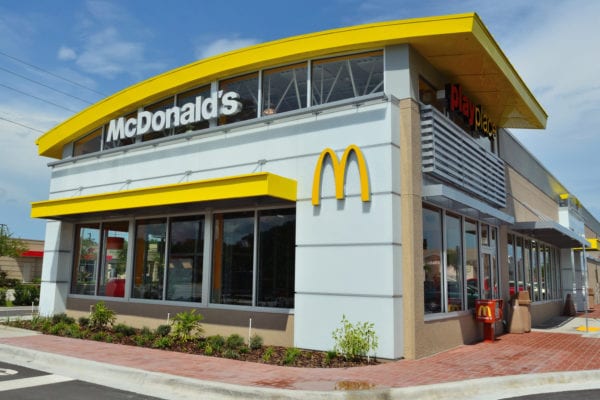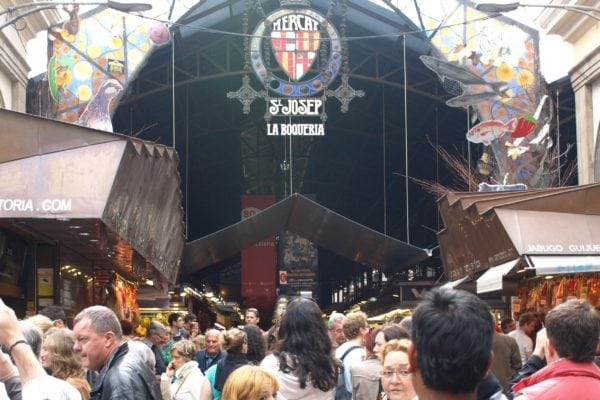Skift Take
Any restaurant opening from Union Square Hospitality Group is one to watch. Operations at Martina, which its chef calls "fine-casual," are a look at current industry trends set to go big.
— Kristen Hawley
This edition of the Chefs+Tech newsletter was sent on August 21, 2017. Subscribe to get the latest in your inbox.
What Danny Meyer’s Martina Means for Restaurants Everywhere
Restaurateur Danny Meyer opened his latest project, Martina, in New York City last week. The dine-in and take-out restaurant features a menu of photo-worthy pizzas and salads, and no item is over $13.
So what does a singular New York City restaurant opening have to do with the larger, nationwide industry? Plenty, when it comes from a superstar restaurateur and displays many of the characteristics of the modern, successful restaurant: 1: Small menu. Limited options mean increased speed, and Martina has just four starters, three salads, seven pizzas, and two desserts. 2. Order at the counter: Lines keep things orderly, and the association with register lines as a feature only of fast food restaurants has dissipated. (See: Sqirl in LA. Souvla in San Francisco.) 3. Custom to-go boxes. Thanks to the popularity of delivery and takeout, there’s been more innovation in to-go packaging. Martina is no exception; its custom-designed pizza boxes have vents on top for steam while still keeping the food hot.
“The idea that Martina could be a testing ground for a bigger company doesn’t sound outlandish,” reads Eater’s coverage of its opening, likening the model to Meyer’s smash hit, Shake Shack. Oh, don’t call this place “fast-casual.” According to chef Nick Adnerer, it’s “fine-casual.” For now, the word is the team plans to focus on the first location, with no expansion plans. But any restaurant from Union Square Hospitality Group is worth watching for signs of going big — I’d expect nothing less.
Danny Meyer, CEO of Union Square Hospitality Group, is speaking at Skift Global Forum 2017. Get tickets now.
D.C. Patrons Rebel Against Surcharge Pegged to Cost of Doing Business
Calling anything besides what’s happening at one specific, famous address in Washington, D.C. dramatic is hard to do these days. But in a town that lives and breathes politics, any move that could be deemed even a little bit political gets attention. Case in point: a D.C. location of Oceanaire restaurant, owned by the parent company of Rainforest Cafe and Bubba Gump Shrimp Co., recently added a 3 percent surcharge “due to the rising costs of doing business in this location, including costs associated with higher minimum wage rates.”
According to the Washington Post, after an image of a receipt from the restaurant was posted on a local blog, commenters quickly went political, saying, for example “Just raise the prices. If you don’t agree with DC labor laws or the cost of rent, then leave. Take your political statement and shove it.” Worth noting, the restaurant group also added the surcharge in other cities. Also worth noting: the chain’s CEO is a billionaire who stars on a show called “Bilion Dollar Buyer” and is often reported as America’s richest restaurateur. So there’s that.
In San Francisco, where I live, most restaurants add a Healthy SF surcharge as part of a mandate that a restaurant must provide healthcare to its full-time workers. This takes different forms at different restaurants; some charge about 3 percent of the total, or a set dollar amount — usually $2 to $3 per check. This happens in other places, too. As a response to the minimum wage hike, restaurants in San Diego reportedly added a 3 percent surcharge to offset a minimum wage hike that went into effect at the beginning of the year.
Is it transparency, a matter of perception, or is it a political statement? The thing is, restaurants have to pay these rising costs one way or another. If they don’t call it out transparently on the bill, it’ll get baked into menu prices. And which will patrons notice more? I’m actually curious about the true answer to that question, especially since I tend to gloss over taxes and charges at the bottom of the receipt. Whether or not it’s fair, it’s the cost of doing business in a capitalistic society.
Another point: in San Francisco, when the Healthy SF surcharge was introduced, many patrons don’t tip on the surcharge (or the tax, for that matter). If an employer instead raises menu prices, that could equal larger tips for workers. Sure, that increase could be marginal, but any amount adds up over a week, a month, and a year.
Taco Bell’s Instagram-Heavy Business M.O.
Instagram is invading more than just restaurant design. Like rainbow food, unicorn whatever, and other culinary monstrosities, Instagrammability has become a marker against which major companies measure their food. The beginning of this Business Insider piece is too good to paraphrase:
Taco Bell reportedly spent two years perfecting the Quesalupa’s cheese pull. The company’s social media team closely watches the brand’s Twitter to keep an eye out for customers who are disappointed by cheese that isn’t as stretchy as what is portrayed in ads. If the team spots a complaint, it could lead to an email reminding staff not to overcook a tortilla or let products to sit around for too long after being fried.
Remember when, as a child, something didn’t look like it did on TV and our parents reminded us that things in real life never look the way they do on television? This is basically the opposite of that experience. The Quesalupa’s signature cheesy stretch is a hallmark of its existence. The piece talks about other ways the image-sharing site affects its operations, and unsurprisingly, it plays a part in everything, from store design to menu development to marketing efforts. Taco Bell has been honing its online voice and image for some time, and now, according to the piece, phase two is coming: “Going forward, the chain wants to curate a collection of sorts, featuring designs of the in-house creative team, partner artists, and more. By highlighting creativity instead of just menu items, Taco Bell hopes to use Instagram to “deepen the relationship” with customers, instead of just posting ads for burritos.”
Digestifs:
- ICYMI, a C+T original: How UberEats Works with Restaurants — Chefs+Tech
- Restaurant sales and visits both dropped during July — Nation’s Resturant News
- How female chefs are changing restaurant kitchen culture — Vogue
- Grubhub now integrates with Aloha POS system — Grubhub
- Daniel Patterson reinvents San Francisco’s Alta for growth — Restaurant Hospitality



